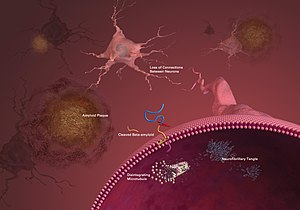Benzo discussion Dr. Limandri:
My impression: great info, so much material to cover though so she mostly skimmed the surface. Lots of the info seemed to come from her own experience. Some material came from the UK — Ashton Manual which I refer to often and it’s full of good info.
Below are my mostly unedited notes from this session along with some lyrics from a famous Rolling Stones song relevant to subject.
- Women use this class of med more than men. 25-50 yr age range is highest; multitasking requirements for women in that age bracket; middle aged, white, wealthier higher utilizers of benzos. The Rolling Stones wrote a famous song about women using Valium, “Mother’s Little Helper” in the 1960s — here are the lyrics:
What a drag it is getting old
“Kids are different today, ”
I hear ev’ry mother say
Mother needs something today to calm her down
And though she’s not really ill
There’s a little yellow pill
She goes running for the shelter of a mother’s little helper
And it helps her on her way, gets her through her busy day“Things are different today, ”
I hear ev’ry mother say
Cooking fresh food for a husband’s just a drag
So she buys an instant cake and she burns her frozen steak
And goes running for the shelter of a mother’s little helper
And two help her on her way, get her through her busy dayDoctor please, some more of these
Outside the door, she took four more
What a drag it is getting old“Men just aren’t the same today”
I hear ev’ry mother say
They just don’t appreciate that you get tired
They’re so hard to satisfy, You can tranquilize your mind
So go running for the shelter of a mother’s little helper
And four help you through the night, help to minimize your plightDoctor please, some more of these
Outside the door, she took four more
What a drag it is getting old“Life’s just much too hard today, ”
I hear ev’ry mother say
The pusuit of happiness just seems a bore
And if you take more of those, you will get an overdose
No more running for the shelter of a mother’s little helper
They just helped you on your way, through your busy dying day
Notes con’t:
2. More deaths for those who were regular daily users v the infrequent.
3. 3 weeks is the longest time they should be prescribed, per the speaker. Most long term users stay at same dosages, but they have rebound anxiety and end up raising the dose over time. When your patient c/o anxiety while on a benzo — and you choose to up the dose — you’ve done opposite of what you were supposed to do.
4. Primary care providers are the bigger offenders, that is, prescribe benzos the most, possibly because they feel pressured to solve all the problems of their patients.
5. Studies are reporting on stats by psychiatrists and not NPs. Add the NPs and the stats would be different. For many providers it’s much quicker to write the script than it is to do MI or other counseling in an effort to back off the dose or taper off. There are providers out there that will write for benzos with no intent to stop because it’s lucrative work, sad to say.
6. GAD has so many somatic c/o so they end up in primary care and while there they end of getting a rx for benzo.
7. Best anxiolytics are SSRIs. Take a bz to bridge until they kick in, for 2-3 weeks, and then stop without taper.
8. DSM5: MDD with anxious distress… emphasize the last part and that it’s linked to the first, as say of encouraging someone to try and SSRI.
9. Why do many people with trauma dislike taking bzd? They feel a loss of control when on them, less reactive, less fight/flight.
10. Dementia and increased falls.
11. It’s expensive to treat all the collateral damage, eg, falls, car accidents, etc.
12. 2.5 x higher rate of suicide attempts: from a big study in Taiwan she mentioned (I don’t have the reference).
13. Anterograde amnesia (use midazolam in your teaching and why it’s used in medical procedures), dissociation, cognitive impairment, paradoxical anxiety that is proven in PET scans. It makes you not care about the anxiety, not care about possible risks. hinders fight/flight — exactly what trauma survivors don’t want.
14. Cognitive impairment makes it hard to learn the skills needed to curb anxiety.
15. COGNITIVE IMPAIRMENT IS WHY YOU DON’T GET WHAT I’M TELLING YOU.
16. CBT to get people off benzos: question why you think it’s helping your anxiety.
Questions from the audience:
State hospitals and volatile patients and common use of bzd’s: increases impulsivity but they’re slower and we can catch them. Use a different gaba med that’s not the benzo receptor: lamictal and gabapentin. both slow the firing and allow staff time to think. State hospitals may want to use benzo cause it’s cheaper.
Alternative anxiolytics: Effexor — more adrenergic at higher doses. 75mg is antidepressant. Fetzima more adrenergic at lower doses so better tolerated. Buspar helpful; others: lamitical and gabapentin. alpha and betas blockers: trauma clients do better on these and feel it right away.
Schizophrenia and benzos: no indication but had been used for akathisia.






You must be logged in to post a comment.